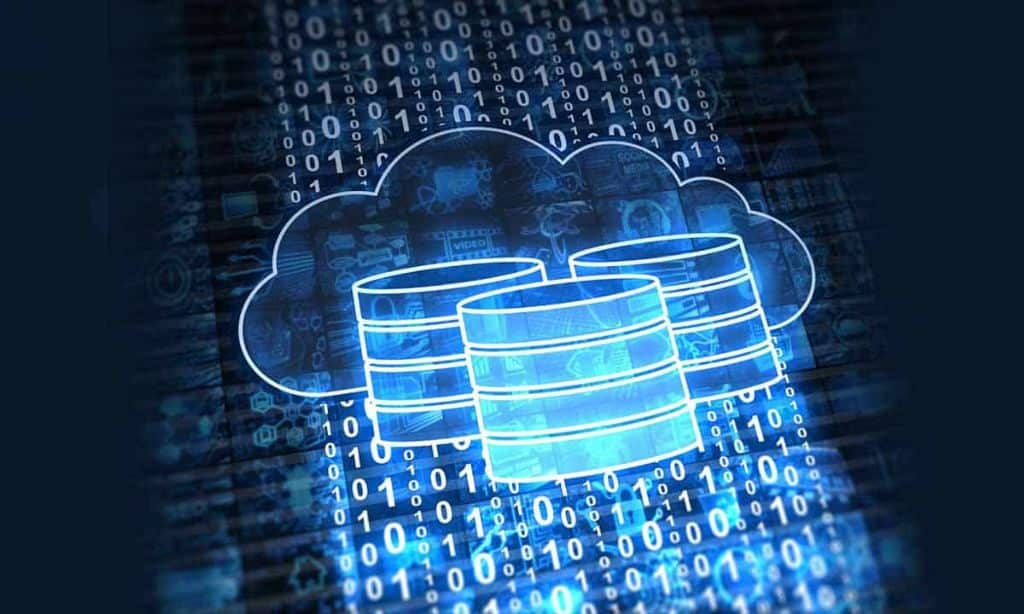A fast website is the key to successful online performance, impacting everything from user experience to search rankings.
Slow load times can frustrate visitors and drive them away, while fast-loading pages encourage them to stay, explore, and convert.
VPS hosting provides dedicated resources for improved performance, but optimizing those resources is essential to make the most of your VPS environment.
In this guide, we’ll explore 10 detailed tips to supercharge your website’s speed on VPS hosting, unlocking its full potential and ensuring an exceptional user experience.
The Importance of Speed Optimization on VPS Hosting
Speed optimization goes beyond just keeping visitors happy—it also directly affects your SEO ranking, bounce rate, and even your bottom line.
In today’s competitive digital landscape, users expect fast, responsive websites, and even a slight delay can result in lost opportunities.
VPS hosting, with its dedicated resources and enhanced control, is ideal for achieving high performance.
However, maximizing your VPS requires careful configuration and ongoing maintenance to achieve the optimal balance of speed and efficiency.
Let’s look at how to make your website a true speed powerhouse on VPS hosting.
10 Tips for Optimizing Your Website’s Speed on VPS Hosting
Let’s get straight into it!
1. Implement Caching Strategies
Caching reduces the need to generate content from scratch for every user visit, speeding up page load times and reduci ng server strain.
By storing frequently accessed data, caching minimizes server workload and accelerates content delivery.
- Browser Caching
Browser caching stores copies of your site’s static resources (like images, CSS, and JavaScript files) locally on users’ devices. This enables faster page load times for repeat visitors, as their browser doesn’t need to download the same resources each time. Set cache expiration headers in your .htaccess file or through your content management system (CMS) to define how long specific resources remain cached. - Server-Side Caching
Server-side caching stores dynamic content (such as frequently requested database queries) in memory. Caching solutions like Redis and Memcached allow you to serve this data from memory instead of querying the database every time, drastically reducing load times. Server-side caching is especially beneficial for content-heavy sites with dynamic content that changes frequently, like e-commerce stores or news sites. - Content Delivery Network (CDN) Caching
A CDN caches your site’s static files on multiple servers worldwide, allowing users to load these resources from the nearest location. This approach reduces latency, as content doesn’t need to travel long distances, resulting in quicker load times for visitors from various regions. CDNs like Cloudflare or Amazon CloudFront can be easily integrated with most VPS setups.
2. Optimize Images and Media Files
Media files, especially images, are often among the heaviest resources on a website.
Optimizing these files is essential to keep your website fast and responsive.
- Compress Images
Large image files can bog down a website, increasing load times and consuming bandwidth. Use tools like TinyPNG or ImageOptim to compress images without compromising quality. Smaller file sizes mean faster load times, which directly benefits mobile users or those on slower connections. - Use Next-Gen Image Formats
Next-gen formats like WebP provide high-quality images at significantly reduced file sizes compared to JPEG or PNG. Modern browsers support these formats, making them an excellent choice for speeding up image-heavy sites. Converting your images to WebP can significantly cut down load times without sacrificing clarity. - Lazy Loading
Lazy loading defers the loading of images until they are needed, such as when they are about to come into view on a user’s screen. This technique is especially useful for pages with many images, as it allows the initial page to load faster. Implement lazy loading via JavaScript or by using plugins like Lazy Load if you’re using a CMS like WordPress.
3. Minimize and Combine CSS and JavaScript Files
Excessive CSS and JavaScript files can slow down your site, especially if they’re not optimized.
Reducing file size and combining resources can help streamline your site’s code.
- Minify CSS and JavaScript
Minifying your CSS and JavaScript removes unnecessary characters, whitespace, and comments, reducing file sizes. This results in faster file downloads and improved load times. Tools like UglifyJS for JavaScript and CSSNano for CSS make minification simple. - Combine Files
Combining multiple CSS and JavaScript files reduces the number of HTTP requests, as fewer files mean fewer requests to the server. This practice is beneficial for sites with multiple small files; combining them into one or two larger files decreases the server load and speeds up page load times. - Defer Non-Essential Scripts
Defer the loading of non-essential scripts to prevent them from blocking the initial rendering of the page. By using “async” or “defer” attributes, scripts load after the main content, allowing pages to render quickly. This is particularly effective for JavaScript-heavy sites.
4. Use a Lightweight Theme and Plugins
Your website’s theme and plugins can impact performance significantly.
Choosing a lightweight theme and managing plugins wisely can reduce load times.
- Choose a Performance-Optimized Theme
Opt for themes that prioritize performance and are free from bloated code. Themes like Astra and GeneratePress are known for their streamlined design, offering responsive and minimal layouts without compromising on aesthetics. - Limit Plugin Use
Each plugin installed on your site adds code and potentially increases server resource usage. Regularly review your plugins and deactivate or delete any that are unnecessary. Fewer plugins mean less strain on your server, resulting in faster load times and reduced maintenance issues. - Update Plugins and Themes
Outdated themes and plugins can introduce performance issues or even security vulnerabilities. Regular updates ensure that your website runs smoothly, is optimized for speed, and remains compatible with the latest technologies.
5. Enable Gzip Compression
Gzip compression compresses files before they’re sent to the browser, reducing load times and saving bandwidth.
This is especially beneficial for text-based files like HTML, CSS, and JavaScript.
- Compress Text Files
By enabling Gzip, text files can be compressed by up to 70%, significantly reducing the amount of data transferred. Smaller file sizes mean faster downloads, resulting in better performance and user experience. - Configure Compression on the Server
Gzip can be enabled in your server’s configuration file (such as .htaccess for Apache or nginx.conf for Nginx). Adding a few lines of code to these files can enable Gzip, making a noticeable difference in page speed. - Test and Verify
After enabling Gzip, test your site’s compression with tools like GTmetrix or Google PageSpeed Insights to ensure the settings are working correctly and to view the impact on file size.
6. Leverage a Content Delivery Network (CDN)
Using a CDN can reduce load times and enhance user experience, especially for a global audience.
- Reduce Latency
CDNs cache your website’s static content on multiple servers worldwide, allowing users to download these files from the nearest server. By reducing the distance content has to travel, CDNs lower latency, resulting in faster load times for visitors around the globe. - Decrease Server Load
Offloading content delivery to a CDN reduces the strain on your VPS server. This allows your VPS to allocate more resources to dynamic content, enhancing overall site performance. - Additional Security Features
Many CDNs offer built-in security features, such as DDoS protection and automatic SSL certificates. These features add an extra layer of security, keeping your site safe while improving performance.
7. Optimize Database Management
An optimized database can greatly enhance load speeds, especially for data-heavy websites like e-commerce platforms or blogs with extensive archives.
- Remove Unnecessary Data
Over time, databases accumulate unused data, such as post revisions, spam comments, and expired transients. Removing this clutter reduces database size, speeding up queries and improving performance. - Optimize Database Tables
Database optimization tools, such as MySQL’s “OPTIMIZE TABLE” command, can enhance table efficiency. Regular table optimization ensures smoother database operations and quicker access to data. - Database Caching
Caching database queries can prevent repetitive data fetching, reducing load times. Plugins like WP-Optimize automate this process, keeping your database lean and responsive.
8. Increase PHP Memory Limit
PHP memory is essential for running data-heavy applications, especially on websites with complex themes or numerous plugins.
- Enhanced Capacity for Dynamic Content
A higher PHP memory limit allows your server to handle more intensive applications, improving site performance and stability. Edit the PHP memory limit in your php.ini file on your VPS to increase resources, minimizing the chances of errors or slowdowns. - Balance with Server Needs
Monitor memory usage regularly to avoid allocating more resources than necessary. This ensures that your VPS maintains optimal balance and that only the required memory is used, maximizing performance.
9. Regularly Monitor Website Performance
Consistent performance monitoring can help you catch issues early, allowing you to address them before they affect user experience.
- Use Monitoring Tools
Tools like Google PageSpeed Insights, Pingdom, and GTmetrix provide detailed reports on your website’s performance, helping you pinpoint areas of improvement. Regular monitoring ensures your site maintains high performance and addresses potential slowdowns. - Identify and Resolve Bottlenecks
Monitoring tools reveal specific issues—like slow-loading scripts, large images, or long server response times—that could be slowing down your website. Resolving these bottlenecks helps maintain optimal speed. - Analyze Server Logs
Reviewing server logs provides insights into server performance, resource usage, and potential errors. Analyzing these logs regularly allows you to detect patterns that may indicate the need for further optimization.
10. Choose an SSD VPS for Faster Disk Access
SSDs (Solid State Drives) provide much faster read/write speeds compared to traditional HDDs, making them a superior choice for performance-focused websites.
- Improved Data Access Speeds
SSDs allow your server to access and retrieve data quickly, resulting in faster load times for your website. This is particularly beneficial for content-heavy sites where fast data access is critical. - Reliability and Stability
SSDs are known for their durability and reliability, reducing the risk of downtime or data loss. This stability enhances user experience by providing consistent, uninterrupted access to your website. - Maximizing VPS Resources
By using an SSD VPS, you’re taking advantage of the latest technology to maximize your server’s performance potential, ensuring your website remains fast and reliable even during high-traffic periods.
The Benefits of Speed Optimization on VPS Hosting
Optimizing your website’s speed on VPS hosting not only improves user experience but also boosts SEO rankings, increases engagement, and reduces bounce rates.
A fast-loading website is crucial in today’s competitive online landscape, where users expect instant access to information.
VPS hosting provides the flexibility and control needed for these optimizations, allowing you to fine-tune settings, manage resources, and ensure your site performs at its best.
Takeaway: Elevate Your Website Performance with VPS Optimization
Optimizing your website’s speed on VPS hosting is an investment that pays off in user satisfaction, search visibility, and long-term success.
From implementing caching and database optimization to leveraging SSD storage, each of these 10 tips contributes to a faster, more responsive site.
Embrace these strategies to unlock the full potential of your VPS, ensuring your site remains competitive and provides a seamless experience for all visitors.
With a carefully optimized VPS setup, you’ll be prepared to handle high traffic, engage users, and stay ahead in the ever-evolving digital landscape.








































